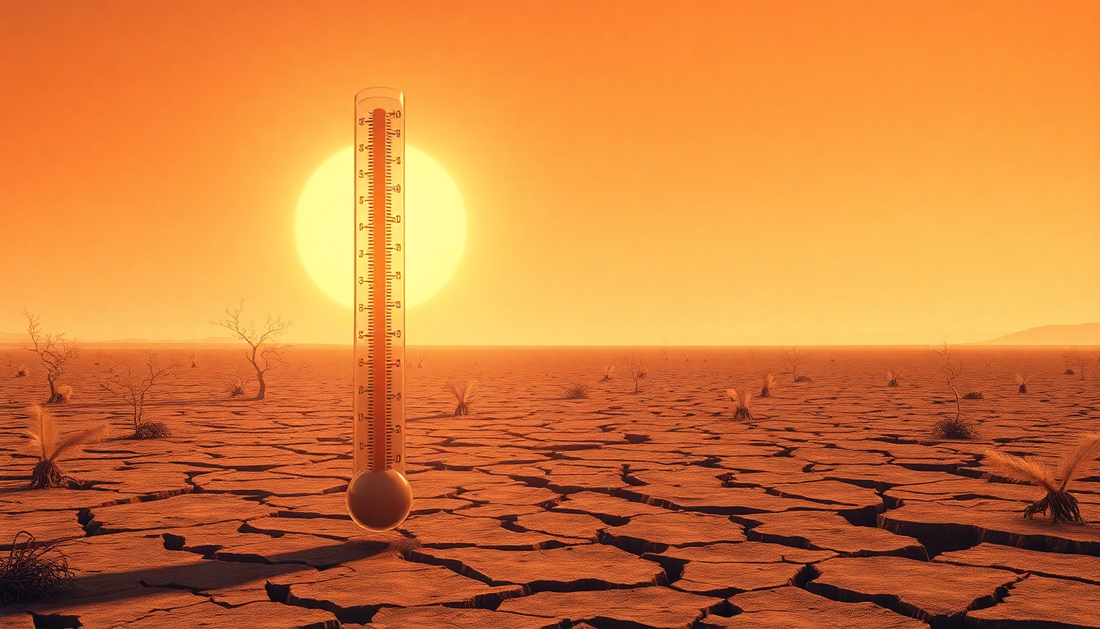As the mercury soars to unprecedented heights this July 2025, many are left wondering: what's behind the relentless heat? While summer warmth is to be expected, the intensity and duration of the current heatwave have caught even seasoned weather experts off guard.
Global Climate Trends
Recent temperature data paints a concerning picture. July 2025 is shaping up to be the hottest on record globally, surpassing the previous highs set just a few years ago. In many regions, daily highs are exceeding 40°C (104°F), shattering long-standing historical averages.
When compared to July temperatures from the early 2000s, the difference is stark. Across much of the Northern Hemisphere, the mercury is running 3-5°C (5-9°F) above the norms we once considered typical. This escalating trend has climate scientists deeply worried about the trajectory of our planet's warming.
Scientific Explanations
The primary driver behind this alarming heat is the continued accumulation of greenhouse gases in the Earth's atmosphere. Decades of unabated fossil fuel emissions have trapped more of the sun's energy, causing the overall temperature of the planet to rise. This greenhouse effect is amplifying seasonal temperature patterns, leading to more extreme heat waves.
Additionally, other atmospheric changes are compounding the problem. Shifts in ocean currents, jet stream patterns, and cloud cover are all contributing to the intensity and duration of the current heatwave. These complex feedback loops within the climate system make predicting and preparing for such events increasingly challenging.
Regional Variations
While the Northern Hemisphere bears the brunt of the scorching temperatures, the impacts are being felt worldwide. Europe, for instance, is experiencing record-breaking heat, with cities like Madrid and Athens regularly exceeding 45°C (113°F). In contrast, parts of the Southern Hemisphere, such as southern Africa and Australia, are experiencing milder than average conditions.
These regional variations highlight the uneven distribution of climate change effects. Factors like latitude, proximity to oceans, and local geography all play a role in how different communities experience the heat. Nonetheless, the overall trend is clear: temperatures are rising, and the frequency and severity of heatwaves are increasing globally.
Human and Environmental Consequences
The human toll of these extreme temperatures is significant. Heat-related illnesses and deaths are on the rise, straining healthcare systems. The elderly, young children, and those with underlying medical conditions are particularly vulnerable. Additionally, the heat is exacerbating existing health issues, from respiratory problems to cardiovascular stress.
Beyond the direct impact on human health, the scorching temperatures are also taking a toll on the environment. Crop yields are suffering, leading to concerns about food security. Ecosystems are under immense stress, with many species struggling to adapt to the rapid changes in their habitats. The cascading effects on biodiversity and ecosystem services are yet to be fully understood.
Mitigation and Adaptation Strategies
Addressing the root causes of climate change is crucial, and individuals, communities, and governments must take immediate action. Reducing greenhouse gas emissions through a transition to renewable energy, improving energy efficiency, and adopting sustainable practices are all essential steps.
At the same time, we must also focus on adaptation strategies to build resilience in the face of these unavoidable climate impacts. This includes improving early warning systems, strengthening infrastructure to withstand extreme heat, and developing heat-resistant agricultural practices. Investing in public health initiatives and urban planning that prioritizes heat mitigation can also help safeguard vulnerable populations.
Conclusion
The scorching temperatures we're experiencing this July 2025 are a stark reminder of the urgent need to address climate change. As global temperatures continue to rise, the frequency and intensity of heatwaves are only expected to increase. By understanding the underlying drivers and taking concerted action, we can work towards a more sustainable and resilient future. The time to act is now, for the sake of our health, our environment, and the generations to come.

